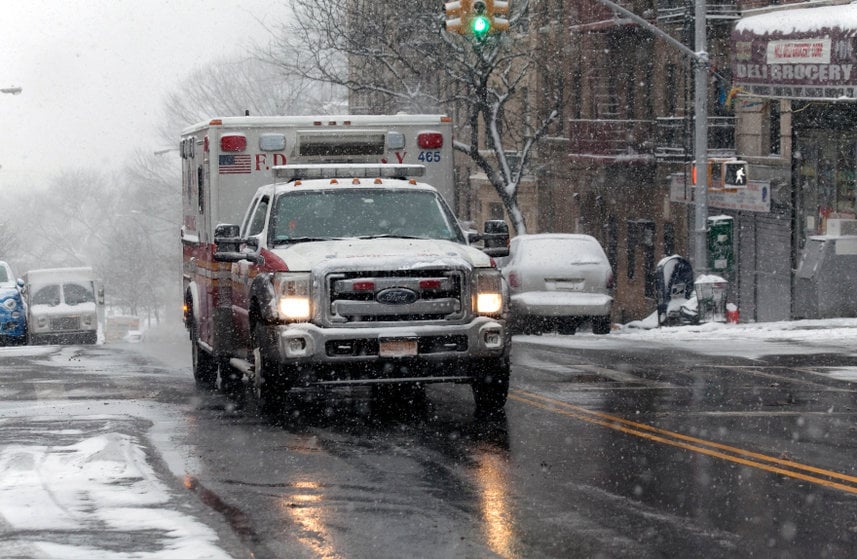
We’re heading into winter soon, with temperatures dropping, snow falling to the ground and people planning warm weather getaways. Regardless of the climate, however, emergency medical personnel must navigate a host of patient emergencies, while also protecting themselves and their equipment from adverse weather conditions.
Environmental factors to be aware of when treating airway emergencies
When tending to patients outdoors amid below-freezing temperatures or the extreme heat of summer, there are several environmental factors that can impact the performance of airway management techniques and suctioning, including light, temperature, altitude, weather conditions, proximity to other healthcare resources and the safety of the immediate environment in which your EMS team is operating.
Before treating patients in life-or-death scenarios, it’s critical that your team formulates a clear plan that considers all possible patient, personnel and environmental factors. Additionally, it’s essential to be equipped with tools that can withstand weather extremes, offer powerful and consistent suction performance, and provide reliable negative pressure for critical suction scenarios.
Cold-related emergencies
Some of the most dangerous cold weather emergencies occur when individuals are exposed to the elements and develop hypothermia. Humans can regulate their body temperature under normal conditions — within a narrow temperature range that falls within one degree on either side of 98.6 degrees Fahrenheit — but as homeotherms, or warm-blooded individuals, humans cannot withstand temperature extremes for long periods of time.
When we’re exposed to temperatures that no longer fall within the healthy range, blood is shunted to the main organs, resulting in pale skin, blue lips, waxy texture of tissues as they freeze and slowing heart rate. Once the heart slows and is no longer able to oxygenate the body, if left untreated, it can result in death. Some patients with extreme cases of hypothermia may require intubation, so careful suctioning is necessary to prepare the airway in these situations.
Heat-related emergencies
During heat emergencies, when body temperature surpasses 104 degrees, heat stroke can set in and damage the brain, heart, kidneys and muscles. Some symptoms to look for when identifying heat-related emergencies include heat cramps, dehydration, heat exhaustion and heatstroke. Like hypothermia, if these symptoms are left untreated, the organs will fail, resulting in patient death.
Protecting the airway is critical during heat-related emergencies, and having the right portable suction devices at your disposal will allow your team to tend to patients at the most common heat stroke sites, including pools, large outdoor events, the beach and other crowded areas.
Equipment that can take the heat (and cold)
SSCOR provides durable products that every EMS professional should have in their emergency preparedness kit, especially when navigating adverse weather and environmental conditions, including:
- The SSCOR Quickdraw, which is transportable in a road ambulance or fixed rotary winged aircraft, is used to clear the airway by removing bodily fluids and particulate matter. In addition to its battery power, which allows it to run continuously for 180 minutes before operating at reduced power, this device is designed to acclimate to adverse temperatures. The device’s operating temperature range is zero degrees Celsius (32 degrees Fahrenheit) to 40 degrees Celsius (104 degrees Fahrenheit), making it a reliable tool when treating patients in extreme cold and hot weather conditions.
- Another portable suction device, the SSCOR VX-2, is designed for use during resuscitation emergencies in prehospital care, making it ideal for hospital crash carts, patient transport and emergency medical services. Like other portable SSCOR suction units, the VX-2 Model 2310 series is designed to provide instant and effective suctioning independent of external power sources, and it can be pre-set to activate immediately upon reaching a distressed patient. The device’s operating temperature range is zero degrees Celsius (32 degrees Fahrenheit) to 39 degrees Celsius (102 degrees Fahrenheit).
Choosing the right equipment for your team
Knowing the ins and outs of your equipment’s features and functions in different emergency environments is a key part of preparing to treat patients in adverse weather conditions. SSCOR’s high-performing portable suction devices will enable your team to efficiently attend to each patient’s needs, in any environment or extreme weather scenario. For help choosing the right device for your agency, check out our EMS suction units.














